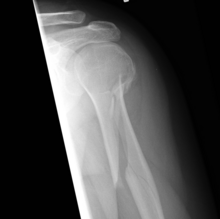Definition and Types of Spiral Fracture
- Spiral fracture is a type of bone fracture characterised by a twisting or spiraling break.
- It commonly occurs in long bones such as the tibia, femur, and humerus.
- Spiral fractures can be classified as complete or incomplete, displaced or non-displaced.
- The fracture pattern resembles a corkscrew or spiral staircase.
- These fractures are often caused by rotational forces applied to the bone.
Causes and Risk Factors of Spiral Fracture
- Sports-related activities such as skiing, soccer, and gymnastics can lead to spiral fractures.
- Traumatic incidents like car accidents or falls from heights can cause spiral fractures.
- Osteoporosis weakens the bones, making individuals more susceptible to spiral fractures.
- Children are more prone to spiral fractures due to the flexibility of their bones.
- Certain medical conditions like bone tumors or infections can increase the risk of spiral fractures.
Symptoms and Diagnosis of Spiral Fracture
- Common symptoms include severe pain, swelling, bruising, and difficulty moving the affected limb.
- X-rays are commonly used to diagnose spiral fractures.
- In some cases, additional imaging techniques like CT scans or MRI may be required.
- Physical examination and medical history are crucial for accurate diagnosis.
- Spiral fractures can sometimes be misdiagnosed as sprains or other types of fractures.
Treatment Options for Spiral Fracture
- Non-surgical treatment may involve immobilization using casts, splints, or braces.
- Surgical intervention may be necessary for complex or displaced spiral fractures.
- Surgical options include open reduction and internal fixation using plates, screws, or rods.
- Rehabilitation and physical therapy play a vital role in the recovery process.
- Pain management techniques such as medication or physical modalities may be utilised.
Complications and Prognosis of Spiral Fracture
- Complications can include delayed healing, malunion, nonunion, or infection.
- The prognosis for spiral fractures is generally good with appropriate treatment.
- Recovery time varies depending on the severity and location of the fracture.
- Compliance with treatment plans and rehabilitation exercises is crucial for optimal outcomes.
- Long-term complications such as arthritis or limited range of motion may occur in some cases.
A spiral fracture (a.k.a. torsion fracture) is a bone fracture occurring when torque (a rotating force) is applied along the axis of a bone. Spiral fractures often occur when the body is in motion while one extremity is planted. For example, a spiral fracture of the tibia (the shinbone) can occur in young children when they fall short on an extended leg while jumping. This occurrence is known as "toddler's fracture". Spiral fractures are also recognised as being suspicious in very young children since to obtain a fracture of this sort requires forceful twisting or jerking of the limbs. Child abuse (physical abuse) and certain conditions such as osteogenesis imperfecta (OI) are considered differentials when identifying spiral or torsion fractures.
